
H.M.S. Amethyst was a modified Black Swan class sloop built by Alexander Stevens and Sons in Govern Scotland and launched in 1943. During the Second World War she made her mark by depth charging and sinking U1276. After the war she was re-classed as a frigate, renumbered as F116 and in 1949 found herself based at Shanghai. At the time there was a civil war going on in China between the Chinese Communists and the Kuomintang. The British Embassy was at Nanking, and because of all the fighting H.M.S.Consort was standing by as guard ship. On the 20 April 1949 the Amethyst was ordered to proceed up the Yangtze to Nanking to relieve Consort and prepare to evacuate all British citizens that were being caught up in the advance of the Chinese Communist Forces. She travelled in company with Kuomintang warships, who busily shelled any enemy batteries that they could spot, causing over 200 casualties. According to the Communists, the Amethyst was also firing, a statement that later, the Amethyst strongly denied. In any event, at 0800 hours, a Communist field gun battery on the north bank of the river fired a salvo of ten shells that fell short of the Amethyst and were assumed to be part of the regular shelling of the Nationalist forces on the other bank.
The Amethyst increased her speed and unfurled two huge battle flags to show her identity. The firing stopped, but an hour later as she was approaching Kiangyin further upriver, another battery opened fire hitting the wheelhouse and killing the Coxn. Another shell burst on the bridge, mortally wounding the Captain Lt.Commander B.M. Skinner and injuring the First Lt. Geoffrey Weston. In the ensuing confusion the ship ran aground on Rose Island and as the shelling continued the sickbay was hit, along with the port engine room and the main generator, but not before the injured Weston managed to get of a signal saying that they were aground and under heavy fire. By now the gyro compass was disabled and due to the lack of power the electrical firing circuits were inoperable leaving the Amethyst a helpless target.
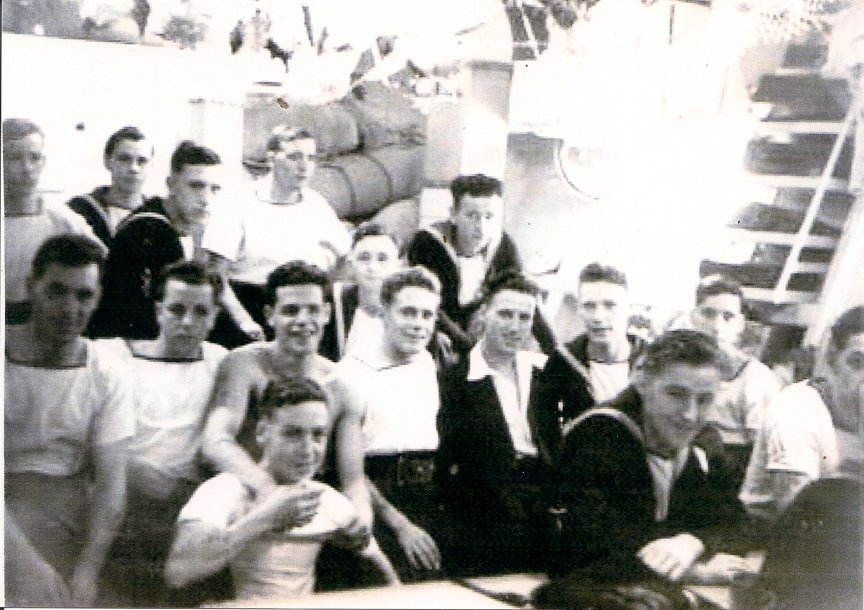
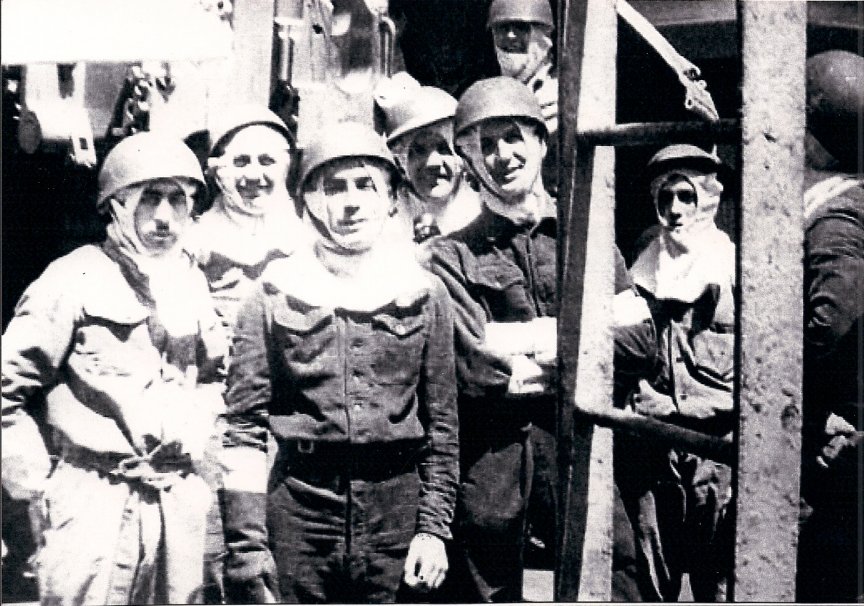
Due to the way the ship had grounded, the two front turrets were unable to bear, so the rear turret fired over thirty rounds at the batteries until it was hit, knocking out one of its guns. The remaining gun carried on firing but Weston ordered it to stop as he thought that might cause the battery to cease firing. It was a vain hope. The shore batteries stepped up their fire with both heavy and light artillery causing more casualties and extensive damage to the ship. Weston prepared for the worst by arming the rest of the crew with rifles and Bren Guns to prepare to repel boarders.
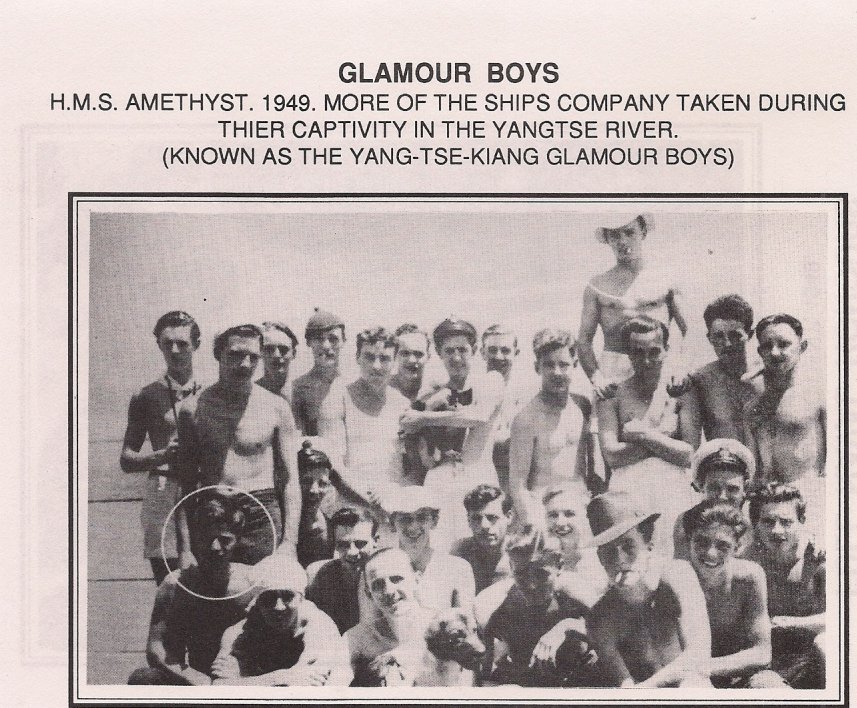
By 10-30 hours no attempt had been made to board the ship, but the shelling and small arms fire carried on unabated. Lt.Com. Weston decided to evacuate as many of the crew as he could to the opposite bank of the river which was controlled by the Kuomintang. Everybody who could swim was ordered over the side, whilst the walking wounded and non swimmers were squeezed in the one remaining boat. Fifty nine ratings and four Chinese mess boys made it to safety, but several more were cut down in the water by machine gun and artillery fire. Those that made it were taken to a Nationalist Hospital and then trucked back to Shanghai. Left on board the Amethyst were forty able bodied men, twelve wounded and fifteen dead. By now the shelling had stopped but everybody had to stay under cover because of the snipers. By the time the shelling stopped at 11-00 hours the casualty list had grown to twenty two men dead and 31 wounded. In all the Amethyst had received over fifty hits mostly below the water line which the crew franticly plugged with hammocks and anything else that came to hand.
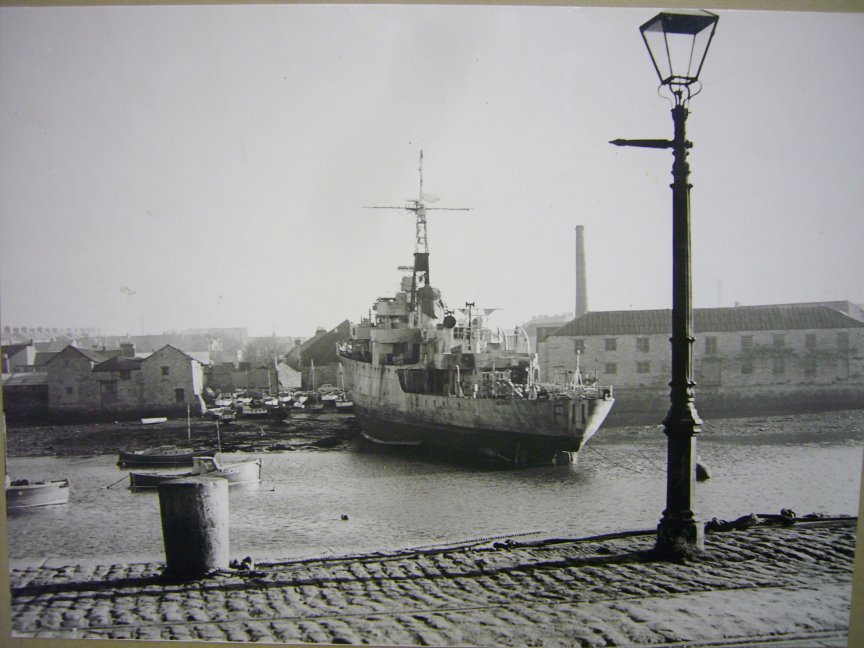
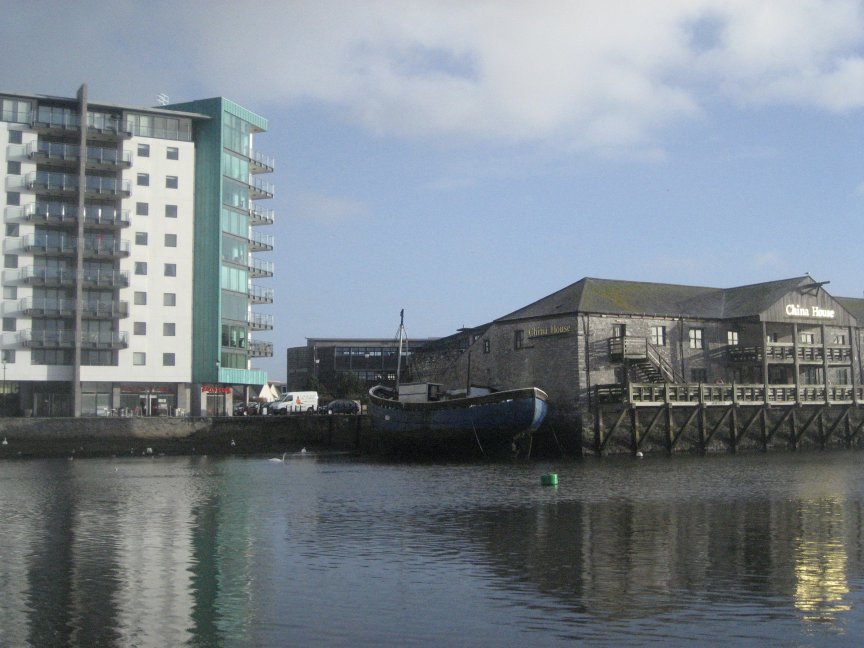
While this was happening H.M.S.Consort was seen steaming towards them at twenty nine knots displaying seven White Ensigns and three Union flags. She came under heavy fire but managed to opened fire and destroy some of the batteries as she tried to take Amethyst under tow. However the heavy shelling made this task impossible, so the Consort had to abandon her efforts and retire having suffered ten men killed and three wounded.
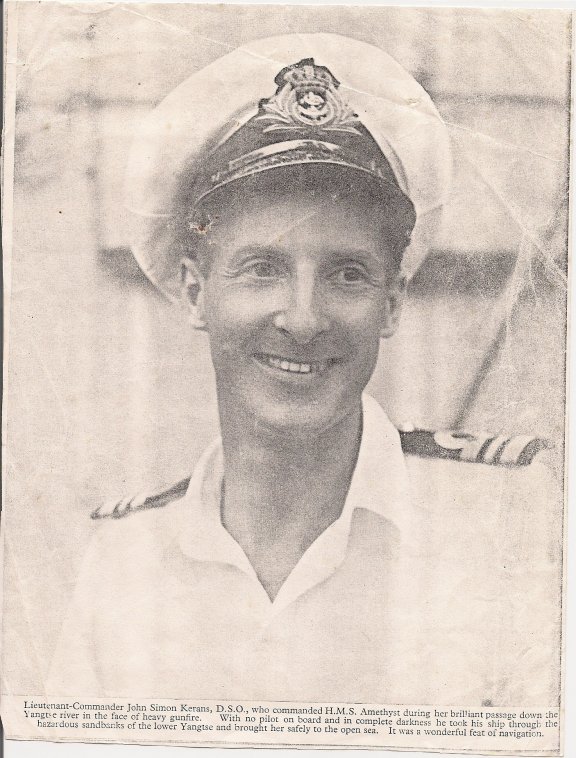
All efforts were now concentrated in trying to get the ship afloat. Everything that could be removed was jettisoned to make the ship lighter, and on April 26, after being aground for six days, the ship was floated of in the dead of night and moved up river to Fu Te Wei. However she couldn’t stay there, so H.M.S. London and H.M.S. Black Swan were sent to escort her down river. Before they got to her, they came under very heavy fire from batteries near Bate Point causing considerable damage to both ships. London was holed in twelve places and lost twelve killed and twenty wounded. Black Swan had seven wounded so it was decided to disengage and return down river to safety. Amethyst removed the worst of her wounded by sampan and went a further ten miles upstream where she anchored and received her new Captain, the British Naval Attache, Lt.Commander J.S.Kerans, who immediately started negotiations with the Communists. These proved largely futile as the Chinese wanted an admission that Amethyst had fired first, which of course the British couldn’t agree to. So months passed while the Chinese took over the whole area, and refused to give the ship and crew vital supplies.
By July things were getting increasingly desperate on the ship and it was becoming obvious that they could all die stuck in the Yangtze, or try to make a run for it. It was a risky decision but on the 31st July Lt. Commander Kerans slipped the mooring cable and slid down the river to start her one hundred and four mile dash for freedom. Running the gauntlet of enemy guns now on both sides of the river she steamed resolutely forward ,streaming black smoke during the worst of the shelling to confuse the Chinese gunners. By 0500 hours she was coming up to the forts that guarded the entrance to the open sea. H.M.S. Amethyst, swept by brilliant searchlights for the batteries on the forts, ploughed on at full speed to the mouth of the river where she met H.M.S.Consort and made her famous signal ‘have rejoined the fleet off Woosung—God save the King.
Nowadays Sutton Harbour is a bustling marina with lots of new waterside apartments and restaurants, and bears little resemblance to the harbour when the Amethyst came to her final rest on Marrowbone Slip. Just a short walk away is the historic Barbican where the Pilgrim Fathers set sail for the New World, and is full of old Pubs and art gallery’s. The fish quay has been moved across the pool near the Marine Aquarium, and with it went some of the character of the Barbican. Still it’s a fine place to see all the boats sailing in and out, and if you walk up the hill, you soon come to Plymouth Hoe with its wonderful panorama of Plymouth Sound. There is so much history here, from Drake, to the Warships still carrying our soldiers to fight in foreign lands. Much has been forgotten, like the Amethyst, but still, a walk around where she was, can still conjure up memories of brave deeds done, and after all’s said and done, that is all that will be left, just memories.
Afterwards refresh yourself in the China House where they have a good selection of photos to show you what the old Barbican looked like.

Submerged Comment says
Rebecca Stone (rebeccastone53@gmail.com) wrote:
Dear Sir,
My name is Rebecca Stone and I am the granddaughter of ‘Bob’ Stone a surviving crew member of HMS Amethyst during the Yangtze Incident in 1949 and Amethyst Association Committee Member.
I am currently studying BA Hons Interior Architecture at The Arts University Bournemouth. As my final degree project I am proposing to tell the Amethyst story through the medium of interior space. Whilst I will be talking to my Grandfather about his accounts I am interested in gathering further accounts/information from Historic Naval sources and places of Naval and Military Forces interest in order to aid my research and understanding of the incident.
I would appreciate any information and/or contacts you may be able to provide me with.
Yours sincerely in anticipation,
Rebecca Stone
Martin Smith says
Can any one help in advising which ship Leading Sign G. R. Holmwood seved during the Yangtze incident in 1949? I would be gratful.
T.P. CROSS. says
WAS THE CAPTAIN(RICHARD TODD IN THE FILM) AWARDED ANY RECOGNITION DURING THE INCIDENT?
geoffrey powell says
I am a radio Amateur call sign M1EDF, Like the HMS Amethyst I use Telegraphy mode only, I have obtained a spec license from Ofcom to operate a remembrance transmission to all other amateur radio operators / stations in order to remember the Yangtze incident 69 yrs on as it is known for 28 days.. The spec call sign will be GB4AMT and start 20 April 2018, If one googles the qrz.com page and puts in left top box the said call sign again GB4AMT you will see a dedication to all those that lost there lives, I am Geoffrey Powell, Ex RAF.. geoffrey.m3uxb@gmail.com , for any info required please contact me ,location Tamworth Staffs.. age 76 yrs.. Thank you all Geoffrey……
Raymond Mccullough says
My father Raymond c McCullough a crew member on board HMS Amethyst unfortunately passed away January 2014, a representative from the maritime quest kindly attended the funeral and informed me that another crew members son Andrew Bannister who,s father also a crew member and sadly deceased would like to talk about our fathers and the history they and we shared . We discussed our fathers history and events and actually came across a newspaper photograph of my grandmother and Andrews grandmother arm in arm awaiting their sons our fathers returning to Portsmouth on board HMS Amethyst .We are fascinated by the fact that this event occurred 10 years before we were born our fathers were not married and our grandmothers did not actually know each other. Being from Belfast it was not a good time or place due to conditions to mention or discuss the naval heroic,s or medals, so myself and Andrew are currently engaging with the museum at HMS Caroline in Belfast to host a HMS Amethyst memorial and display later in 2019 hopefully on the anniversary of HMS Amethyst in memory of our fathers i have constructed a deans marine model of HMS Amethyst which will be proudly exhibited in their and all the heroic crew members memory other memorabilia including their medals will also be on display .Anyone who would like any photographs or copies of any memorabilia we possess we will be happy to oblige .We would like to keep our fathers and their shipmates brave actions with our family’s and friends for their generations to remember .
Bill Carey says
I’m sorry to criticise, but Amethyst was not built in ‘Govern Scotland’ as stated. (That sounds more like an SNP declaration of intent!) She was built in what was known to be a small fishing village on the Clyde named ‘Govan, Glasgow’!
Jack Xi says
Any information about George Hickinbottom, Seaman of HMS Amethyst.
Because of him, Cat Simon had a chance to join HMS Amethyst.
Peter Stratford says
Where could I find a crew list of H.M.S. Amethyst.
My interest is Roland Green, sick berth attendant c/mx 52437.
Beverley Roberts says
My amazing Dad will be 90 years old on Nov 14th 2020 I have just received confirmation of his involvement in the Yangtze incident:-
The date is April 20, 1949 and China is in the middle of a bloody civil war.
The Communist People’s Liberation Army led by Mao Tse Tung and the nationalist Kuomintang are at each other’s throats on the banks of the river Yangtze during China’s War of Liberation.
Four years previously Great Britain, the USA and the Soviet Union all agreed a policy of non-intervention in Chinese domestic affairs under the Moscow Declaration.
As the Chinese Civil War raged on, the Communists began to make headway on the shores of the Yangtze River, near the city of Nanking and warned that any foreign ships in the river would be attacked.
The UK Government had a ship stay in China as a guard ship to protect British embassy staff in Nanking. The HMS Amethyst, under diplomatic anchorage, was sailing up the Yangtze River to Nanking to relieve the HMS Consort of her guard ship duty when all of a sudden communist Chinese batteries started firing heavily upon the ship, killing 22 of the crew – including the captain.
The ship ran aground at the nearby Rose island and was severely damaged. Over 50 of the crew were either killed, dying or seriously injured. (This is where my dad, junior seaman Brian Roberts was taken off as he was severely injured) Some were evacuated to Shanghai and were treated in hospital. The ship was subsequently stuck on the Yangtze River for over 100 days before making a miraculous escape to the opening of the South China Sea on July 30 1949.
Prior to this there were three other ships involved in assisted escape attempts; the destroyer HMS Consort, the frigate HMS Black Swan and the cruiser HMS London. All three suffered heavy damage and casualties in their attempts to save the Amethyst.
Stephen Barrett says
Of interest to persons interceded in HMS Amethyst, . I believe I have the last known painting of HMS Amethyst at Marrowbone Slip , Sutton Harbour, Plymouth. This is an history Post-war Plymouth oil on canvas painted by William Mann. A noted painter and teacher William Mann was the Vice -principle of Plymouth College of Art and Design until he retired. I would be more than happy to send a picture of this historic oil for those interested. Stephen Barrett
Brendan says
In response to Martin Smiths now dated query, R G Holmwood (Richard) as I knew him, was a long time neighbour to my parents in Perth WA. Richard was a true gentleman who we all sadly miss. He had many interesting stories to tell, I only wish I had taken more details when he was still with us.
Richard was certainly involved in the Yangtze incident but was on board H.M.S. London!
Kind regards
Brendan
Brendan.barber1@bigpond.com